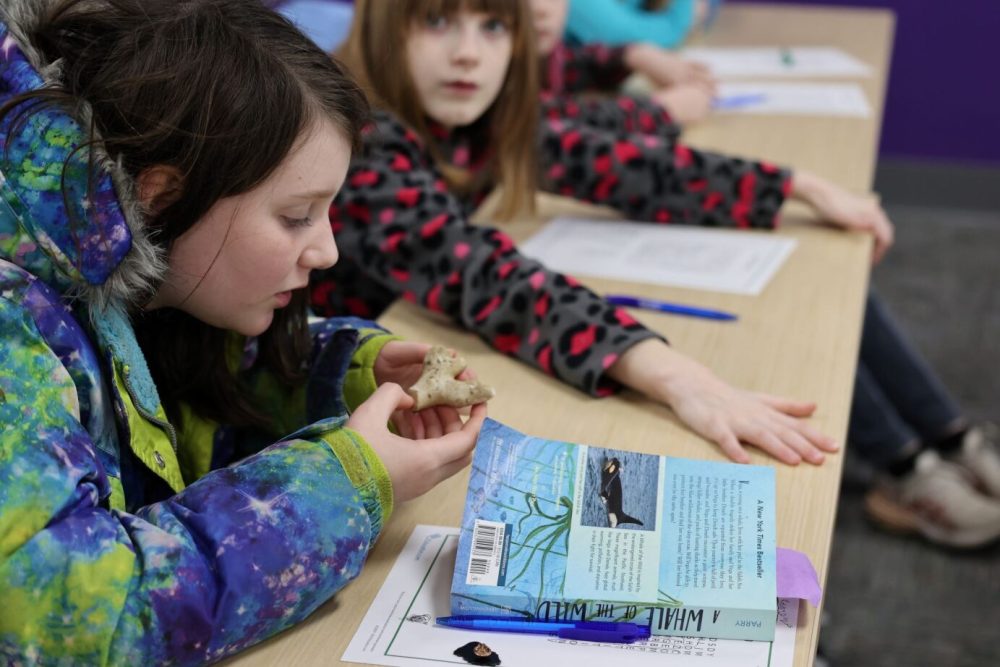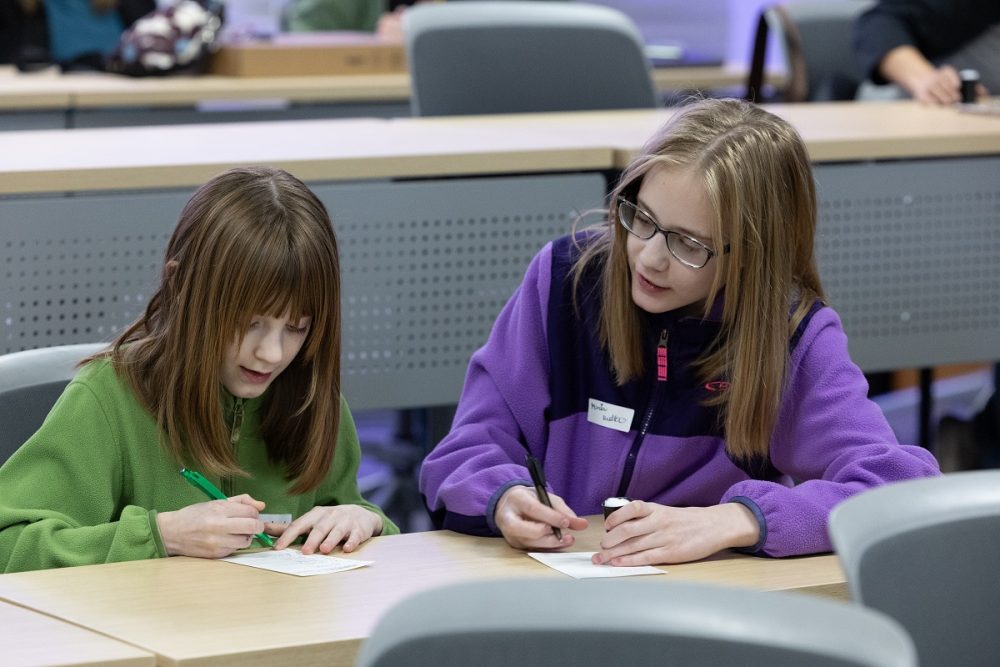During the fall semester, local families dug deeper into science, using hands-on activities and story time sessions to discover the changes of the seasons, how animals use teamwork in the wild and how some animals use night vision. These opportunities were possible through the relaunching of educational community programming through the Museum of Natural History at the University of Wisconsin-Stevens Point.
Outreach has remained the museum’s core mission, even while its new space is being reimagined along the A wing of the UW-Stevens Point Science Building’s first floor. The museum’s former space was closed in Albertson Hall to make way for the construction of a new library.
“The museum’s community outreach is intrinsic to its operating plan,” said Brigid Ferkett, the museum’s outreach specialist. “Generations of area families have enjoyed natural science collections ranging from archaeological artifacts to vertebrates. At present, thousands of artifacts, laboriously wrapped and labeled for the move and relocation, remain tucked away until they will be utilized for research or exhibition in the future.”
While progress on the physical space continues, thanks to funding approved for staff from the Student Government Association, Ferkett welcomed a cohort of students to coordinate the first round of revamped programs over the fall semester. A biweekly Story Time resumed in the Collins Classroom Center to give families of young children a chance to connect and learn.
 Students attend a Junior Scientist program, sponsored by the Museum of Natural History.
Students attend a Junior Scientist program, sponsored by the Museum of Natural History.
Senior Olivia Sykes, a history and social studies education major, helped with the relaunch of the museum’s popular Junior Scientist programming in a space across from the new museum. Sykes led lesson plans on habitats and ways in which animals partner to ensure their survival.
“I love working with kids and getting to see them flourish in a different type of learning environment is very rewarding,” said Sykes. “I think the biggest highlight of working with them in the developing space is showing them all the changes being made, as they are just as excited as we are!”
The revamped 2023 programs, hosted by Ferkett and student staff, drew over 200 participants eager to experience the wonders of the museum, even if it was by gathering in temporary spaces.
“My student workers have dived right into implementing programming and I’m so proud of them,” said Ferkett. “I enjoy working with the students and staff on all the pieces that must be brought together for the relaunch.”
For decades, students have gained career experience working as collections managers, docents, and outreach assistants in the former museum. Faculty have also used the museum and its collections as part of their curriculum.
Samantha Kaplan, professor of geography and geology and curator of geology, has used the museum collections of rocks, minerals and paleontology specimens for teaching and research for the past 15 years. She is eager to unveil new interactive exhibits to the public but also values the impact the museum will once again have for UWSP students.
“These collections are a strong draw for visitors and need to be showcased to maintain and expand our current and future audiences,” said Kaplan.
 Students at the Junior Scientist program guess scents to help them learn how nocturnal animals hunt and survive.
Students at the Junior Scientist program guess scents to help them learn how nocturnal animals hunt and survive.
Before its closure, the museum served more than 30,000 student visitors from more than 100 school districts across central and northern Wisconsin each year. The vision is to highlight existing collections of North American wildlife and rotating examples of student-created works. The museum is expected to open to community members in early 2024.
Staff, curators and volunteers have been preparing to make a permanent home for the museum in the Science Building for the past two years. Ferkett tapped into her experiences working in nature centers, zoos and libraries. She visited with directors of other Wisconsin museums and worked on logistical plans for a relaunch. Former university classrooms were transformed into learning and display spaces. From late summer through the fall semester of 2023, flooring was installed, walls painted, staff began to install shelving, and wheeled in carts and racks to host artifacts.
Thanks to $25,000 in recently donated funds, a new interactive Discovery Center will feature learning stations and areas where visitors can make projects, read and explore museum collections. Curators and staff are moving ahead in planning interpretative activities and exhibits to showcase the museum’s resources, including digital media and hands-on activities accessible to all learners.
Although the former museum’s beloved dioramas remain in storage, visitors will be able to browse fossil, rock and mineral specimens and enjoy hands-on interactive science-based exhibits in the first phase of opening. Herpetology and Ichthyology Club members set up habitats to house live animals in the museum Welcome Center.
A new slate of programming for the community will be announced soon for the spring 2024 semester. Meanwhile, UWSP museum curators have set plans to coordinate the museum’s role for events such as the STEAM Point Days in February 2024 and the return of the Museum of Natural History Collection Crawl in April. Local teachers can email museum@uwsp.edu to learn more about offerings for school groups while the exhibits are being rebuilt.
“Behind the scenes we are caring for collections, collaborating on grant writing and fundraising, and making plans to give the museum its best possible start in its new location,” said Ferkett. “It’s coming together thanks to the diligent work of university faculty and staff who are committed to building a vibrant museum.”
